Occupational environment monitoring at a life jacket manufacturing factory
99,000 ₫
Note: The above price is calculated for one sample, and the price may fluctuate depending on the area of the environment to be monitored and market movements. For more accurate pricing support, please refer to the price list or contact our consulting staff directly.
Monitoring the environment of a life jacket production factory is a session of collecting, analyzing, and evaluating workplace factors that may be harmful to workers’ health.
Table of Contents
Toggle1. Overview of Life Jacket Manufacturing Factory
a. What is a Life Jacket Manufacturing Factory?
Factory manufacturing life jackets is a specialized production facility focused on producing life jackets, a type of garment designed to provide protection and safety when in contact with water. Life jackets are commonly used in outdoor activities such as swimming, boating, sailing, surfing, diving, and other water-related activities.

b. Production stages in a life jacket manufacturing factory
The production stages in a life jacket manufacturing factory may include the following steps:
- Design and development: The process begins with designing life jacket models and developing detailed technical drawings. This stage defines style, materials, colors, and necessary safety features.
- Material procurement: The factory purchases required materials such as fabric, lining, insulation, zippers, buckles, hooks, accessories, and other components for life jacket production.
- Fabric cutting: Fabric is cut into individual parts of the life jacket according to the technical drawings. Parts include the outer shell, lining, insulation, and other small details.
- Sewing and processing: The parts of the life jacket are sewn together through industrial sewing processes. This includes stitching seams, creating storage pockets, attaching zippers, buckles, and other details.
- Labeling and printing: After sewing, brand labels and product information are attached to the life jacket. Printing processes, such as logos or graphics, may also be applied.
- Quality inspection: Finished life jackets are inspected to ensure compliance with standards and manufacturer requirements. Tests may include measuring dimensions, checking water resistance, durability, and other safety factors.
- Packing and transportation: Once approved through quality checks, life jackets are packaged and prepared for shipment to retail outlets or end customers.

c. Types of machinery used in life jacket manufacturing factories
In a life jacket manufacturing factory, several types of machinery are commonly used to increase productivity and ensure product quality. These include:
- Automatic fabric cutting machines: Used to cut fabric into life jacket components according to technical drawings, ensuring precision and efficiency.
- Industrial sewing machines: Used to stitch life jacket parts together. These machines are adjusted for specific life jacket requirements and may feature double stitching, zigzag stitching, and other modes.
- Heat press machines: Used to bond life jacket components with heat and pressure, creating durable and strong connections between fabric, lining, and insulation.
- Printing machines: Used to print images, logos, or product information on life jackets. Printing technologies such as heat transfer, ink printing, direct printing, or weaving can be applied.
- Embroidery machines: Used to embroider logos, images, or decorative patterns onto life jackets, producing intricate and detailed designs.
- Quality inspection machines: Used to test water resistance, durability, stitching, strength, and other safety factors to ensure compliance with standards before packaging.

d. Possible occupational diseases for workers in life jacket manufacturing factories
Workers in life jacket manufacturing factories may face several occupational diseases caused by workplace factors. Some common occupational diseases in the life jacket industry include:
- Respiratory diseases: Workers may be exposed to toxic fumes, dust, and small particles during production. Inhalation of irritants or toxins can cause rhinitis, sinusitis, bronchitis, or pneumonia.
- Skin diseases: Frequent contact with chemicals, oils, additives, and materials may cause skin irritation, dermatitis, eczema, or allergic reactions.
- Spinal and musculoskeletal disorders: Tasks such as cutting, sewing, and processing require repetitive motions over long periods, leading to back pain, cervical spine issues, and other musculoskeletal problems.
- Tropical diseases: In some factories located in tropical regions, workers may be exposed to high temperature and humidity, leading to heat exhaustion, heat stroke, and other heat-related health issues.

e. Common types of life jackets on the market
Currently, there are many types of life jackets available on the market, widely used in outdoor and water activities. Some common types include:
- Life-saving jackets/vests: Designed to provide buoyancy and support rescue efforts. These jackets often feature multiple compartments and straps for secure fastening and safety during water exposure.
- Adventure sports personal flotation devices (PFD): Used in activities such as windsurfing, surfing, kayaking, jet skiing, and diving. They are lightweight, flexible, and allow freedom of movement.
- Children’s life jackets: Specially designed to ensure safety for children during water activities, with suitable size and structure to keep them afloat and protected.
- Surfing PFD: Specifically made for surfers, often with collar integration or special designs to facilitate easy movement in waves.
- Sailing PFD: Designed for sailors and boat operators, offering comfort and flexibility to allow activities such as steering and diving.
- Industrial life jackets: Used in specialized work environments such as construction sites, seaports, or water-related jobs. These jackets may feature water resistance, fire resistance, and compliance with industrial safety standards.
2. Overview of Occupational Environment Monitoring Services
a. What is occupational environment monitoring in a life jacket manufacturing factory?
Occupational environment monitoring (or workplace environmental measurement) in a life jacket manufacturing factory involves collecting, evaluating, and analyzing environmental factors to apply timely measures, reduce health risks for workers, and prevent occupational diseases. Occupational environment monitoring is mandatory for life jacket manufacturing factories.
It plays a crucial role in protecting and improving worker health because employees are the core resources directly generating profits for enterprises. Workers frequently exposed to harmful factors beyond permissible limits face health risks and occupational diseases.
REGISTER OCCUPATIONAL ENVIRONMENT MONITORING SERVICE
b. Nam Viet occupational environment monitoring program
Nam Viet’s occupational environment monitoring program is developed by monitoring engineers specializing in labor safety and environmental protection. To ensure worker health and safety, the program applies modern measurement methods to monitor air, water, microclimate, physical, and dust factors in the workplace. This program is critical for maintaining safe working environments and protecting worker health.
Additionally, Nam Viet’s monitoring program contributes to research and development of solutions to improve workplace environmental quality. With the dedication and professionalism of its monitoring experts, Nam Viet’s exclusive program represents a breakthrough in occupational safety management and environmental protection in Vietnam.

c. Standardization in workplace environmental measurement procedures
Standardization in Nam Viet’s workplace measurement procedures is essential for ensuring reliable results. To guarantee accuracy and credibility, the program follows recognized standards and procedures of the Ho Chi Minh City Department of Health. This ensures collected data is highly reliable for evaluating environments and making decisions to improve worker safety.
These standardized procedures are carried out by qualified monitoring specialists with years of experience, enabling managers and experts to trust An Toan Nam Viet’s results for accurate and valuable decisions in protecting health and the environment.
By applying standardization, Nam Viet demonstrates its commitment to safe workplaces and contributes positively to occupational safety and environmental management in Vietnam.
d. Reporting results of life jacket factory monitoring
Monitoring results are prepared according to Form 04, Appendix III issued with Decree 44/2016/ND-CP and made in two copies: one for the contracting enterprise and one kept by the monitoring organization.
Monitoring results must be stored indefinitely, as required by law.

e. Frequency of occupational environment monitoring as per law
According to Clause 2, Article 18 of the Law on Occupational Safety and Health 84/2015/QH13, employers must conduct occupational environment monitoring to evaluate harmful factors at least once a year.
f. Deadline for submitting occupational environment monitoring reports
The deadline for submission is before December 31 each year. Enterprises in manufacturing sectors must submit reports to the Department of Health in the locality where the enterprise’s headquarters and employees are located.
When there are changes in technology, production processes, or facility upgrades that may create new harmful factors, enterprises must update occupational hygiene records with the new monitoring requirements.
g. Penalties for violations of occupational environment monitoring for employers
According to Article 27 of Decree 12/2022/ND-CP dated January 17, 2022, on administrative penalties in the field of labor, social insurance, and Vietnamese workers working abroad under contracts:
- Clause 2: A fine of 2,000,000 – 5,000,000 VND for employers who fail to publicly notify employees at the monitoring site and workplace about monitoring results and hazard assessments immediately after results are available.
- Clause 3: A fine of 20,000,000 – 40,000,000 VND for employers failing to perform monitoring to control health hazards as required by law.
- Clause 4: A fine of 40,000,000 – 60,000,000 VND for employers collaborating with monitoring organizations to commit fraud during monitoring, without reaching criminal liability.
3. Harmful environmental factors for workers in the life jacket manufacturing factory
In the life jacket manufacturing factory, there are several environmental factors that can be harmful to workers. Below are some potential environmental factors that may cause harm:
- Chemicals: During the life jacket manufacturing process, chemicals such as solvents, dyes, and flame retardants may be used. Exposure to these substances can cause skin irritation, allergies, or damage to the respiratory and digestive systems.
- Dust and chemical fumes: The production process of life jackets may generate dust from materials such as fabric, foam, and plastic. In addition, chemical fumes from processing, welding, and heating may exist in the working air and pose risks when inhaled into the body.
- Noise: Machinery and equipment in the life jacket manufacturing factory can generate high levels of noise. Continuous and excessive noise may harm hearing and cause stress, insomnia, and negative impacts on the overall health of workers.
- Temperature and humidity: Some life jacket production processes may require specific temperature and humidity conditions. High temperature and inappropriate humidity can cause fatigue, dehydration, and weaken workers’ health.
- Physical hazards: During the production of life jackets, there may be physical hazards such as injuries from impacts, cuts, and punctures from tools and equipment used.
REGISTER FOR OCCUPATIONAL ENVIRONMENTAL MONITORING SERVICE
4. Measures to improve the working environment in the life jacket manufacturing factory
To improve the working environment in the life jacket manufacturing factory, the following measures can be applied:
- Ensure occupational health and safety management systems: Develop and implement occupational health and safety management procedures such as risk assessment and management, safety design, safe working procedures, employee training on occupational safety, and regular monitoring.
- Provide and use protective equipment: Ensure that workers are fully provided with and use personal protective equipment such as helmets, safety glasses, gloves, masks, and protective clothing. At the same time, ensure maintenance and replacement of protective equipment when necessary.
- Chemical control: Ensure the storage, use, and transportation of chemicals comply with safety regulations. Use vacuum devices, effective ventilation systems, and minimize direct exposure to toxic chemicals.
- Adjust temperature and humidity: Ensure comfortable working conditions in terms of temperature and humidity. Use air conditioning systems, provide sufficient drinking water, and ensure a well-ventilated working atmosphere.
- Noise management: Apply measures to reduce noise in the factory such as using sound barriers, insulation, and noise reduction devices. At the same time, provide protective headphones and train workers about the impact of noise and how to protect their hearing.
- Organize reasonable working space: Create a comfortable, clean, and safe working environment. Ensure proper arrangement of machinery, equipment, and materials to help reduce risks of collision and accidents.
- Training and awareness improvement: Train workers on risks and safety measures, encourage participation in programs to raise awareness about occupational safety and health.
- Conduct periodic inspections and evaluations: Carry out periodic inspections, evaluations, and monitoring to ensure compliance with safety regulations and continuous improvement of the working environment.
- Periodically organize occupational environmental monitoring in factories, collect and analyze harmful factors for workers, thereby adjusting and reducing risks to prevent occupational diseases for them.
5. Benefits of periodic monitoring in the life jacket manufacturing factory
An Toan Nam Viet provides businesses with great benefits when using occupational environmental monitoring services in accordance with Decree 44/2016/NĐ – CP on the management and control of harmful factors in the working environment affecting workers.
- Businesses can proactively control harmful factors in workshops or factories.
- Receive consulting and recommendations on measures to minimize harmful factors and improve the quality of the working environment.
- Indirectly protect human resources, the key factor in the development process of the business.
- Minimize the impact of occupational diseases on human health, thereby reducing future medical treatment costs.
- Workers’ health is improved, leading to guaranteed and maintained product quality as well as productivity.
- Ensure compliance with occupational safety laws, avoiding legal risks.
- Create reputation and professionalism in all aspects, thereby enhancing the brand of the business.
The environmental monitoring service of An Toan Nam Viet is the solution to minimize the harm of occupational diseases, contributing to creating a healthy and high-quality working environment.

6. National occupational environmental monitoring center
Occupational environmental monitoring center of An Toan Nam Viet is a professional unit specializing in monitoring and measuring the quality of the working environment throughout all provinces and cities in Vietnam. With an experienced team of monitoring specialists, the center uses modern measuring equipment to ensure accuracy and reliability.
In addition to providing monitoring services, the center also supports customers in planning, handling, and monitoring occupational environmental issues. With the motto “customers are the center,” the center cares about customer satisfaction, meets all customer needs, and is committed to providing the best solutions for businesses.
REGISTER FOR OCCUPATIONAL ENVIRONMENTAL MONITORING SERVICE
With investment in technology, equipment, and human resources, the monitoring center of An Toan Nam Viet has been and is becoming one of the reputable units in the field of occupational environmental monitoring in Ho Chi Minh City with the following goals:
- We always value brand reputation and the quality of our products and services.
- We provide customers with the best and most suitable solutions possible.
- Together with a team of experienced Masters and Engineers who are dedicated to protecting the environment and benefiting businesses.
- Coming to the Occupational Environmental Monitoring team of An Toan Nam Viet, your company will receive professional service from experts in the monitoring field. At the same time, you will get the best cost advantages.
The process of occupational environmental monitoring at An Toan Nam Viet includes the following basic steps:
- Before conducting occupational environmental monitoring, our company always ensures that the machinery and equipment serving monitoring are adjusted and calibrated in accordance with legal regulations.
- Implement the occupational environmental monitoring process fully and correctly as committed to the Department of Health.
- Accurately report the occupational environmental monitoring results to employers.
- In cases where occupational environmental monitoring results do not ensure worker safety, An Toan Nam Viet will support in providing remedial solutions and the workplace will implement as follows:
- Implement measures to improve working conditions to minimize the impact of harmful factors and prevent occupational diseases.
- Organize health checks to detect early occupational diseases and other work-related illnesses for workers in unsafe environments.
- Provide allowances in kind for workers in accordance with labor laws.

7. Occupational environmental monitoring quotation
To help businesses carry out occupational environmental monitoring in a professional and effective manner, An Toan Nam Viet provides customers with a high-quality and reasonably priced occupational environmental monitoring service quotation.
- Our monitoring quotation provides detailed information about the pricing of the monitoring services we are offering, including costs related to transportation, measurement, analysis, and reporting. Customers can be completely assured of the accuracy and reliability of the monitoring reports we provide.
- We are committed to always offering the most competitive and reasonable prices in the market, while we are also always ready to advise and answer any questions about monitoring services quickly and professionally.
- With the monitoring quotation of An Toan Nam Viet, customers can easily choose service packages that suit their needs. We are committed to bringing customers the highest satisfaction with professional service quality.
No comments yet

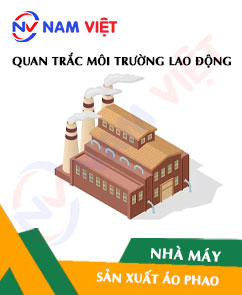
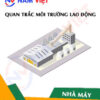
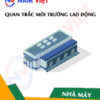


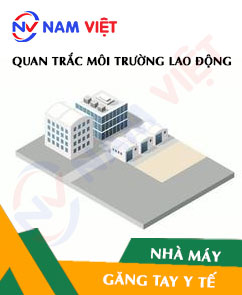

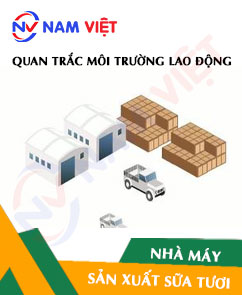



Review Occupational environment monitoring at a life jacket manufacturing factory
There are no reviews yet.